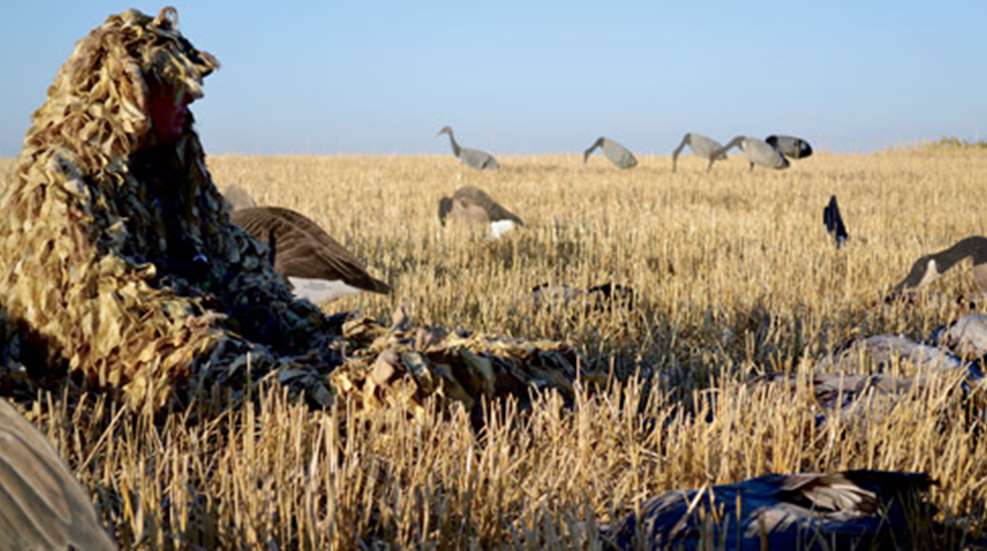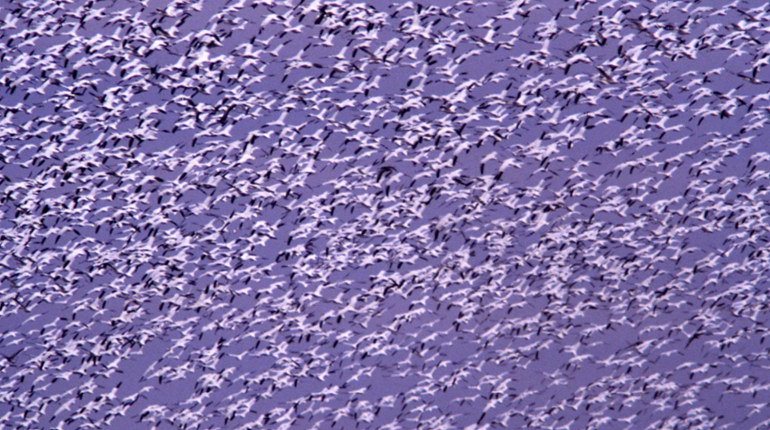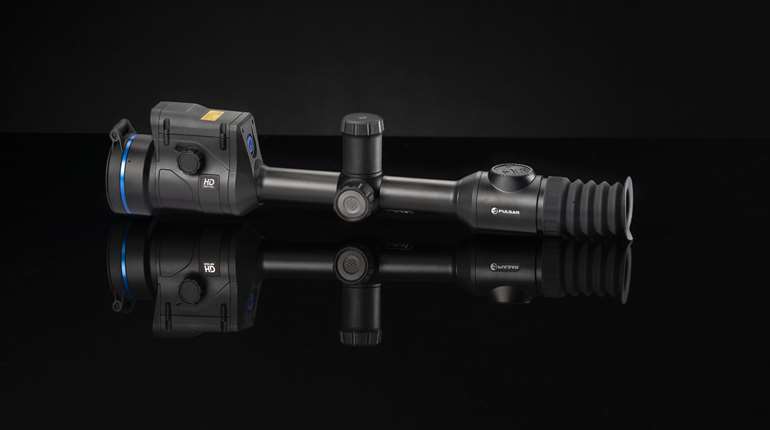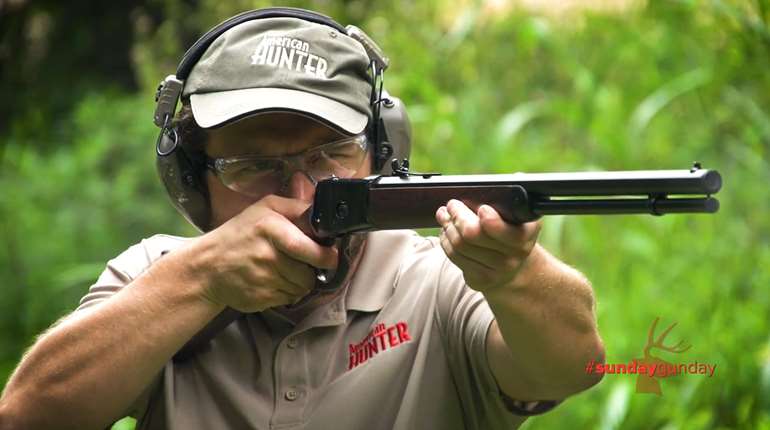
The ball of pintails screams over our spread, more easily heard than seen in the soft morning light. Seconds ago we placed the last of our decoys, and I’m happy to be tucked into my layout blind enjoying the show. With little hesitation, the birds gracefully ride the air down into our setup, the way only pintails seem wont or able to do. I don’t consider grabbing my gun. It is still a few minutes before legal light and, anyhow, I have no desire to fire unfairly from the shadows.
One of the hens catches my eye as she feeds on ripened peas and slowly waddles in my direction to within a few yards. The birds are staging for migration outside Saskatoon, Saskatchewan, and I ponder the hen’s plight. Has she nested nearby, or come here to molt? Will she find sufficient protein to arrive at the Texas Gulf or some other wintering area in good health? And how many times has she begun this long journey, this tradition seemingly older than time itself?
Such questions regarding the mystery of the migration fascinate duck hunters—not just deer hunters who also hunt ducks, but those who consider themselves duck hunters first and foremost—the guys who find a buddy’s trophy buck neat and all, but truthfully would rather shoot a snow-white canvasback.
If you’re one of them, then Canada beckons. The quantity of birds, diversity of species and liberal bag limits offered by Alberta, Saskatchewan and Manitoba are arguably unrivaled anywhere in the United States. When a few friends learned I was flying to Saskatoon to hunt ducks, they told me Canada was overrated. They were wrong.
Early-Season Tactics
The sun rises over the flat, expansive Canadian prairie to reveal the largest spread of snow geese I’ve ever hunted over. A one-acre pond 800 yards away is saturated with ducks. Whatever resources it offers are apparently worth the discomfort of cramming in wing-to-wing.
A group of mallards swings wide of the spread and appears poised to continue.
“Quack, quack,” my friend Nick says. “Call to them, Kyle.”
In my excitement, and perhaps because I haven’t called to live ducks in eight months, the call feels foreign in my hands. As I press it to my lips, I’m certain I’ll botch the comeback call. But the ducks turn, and as their cupped wings cut the air I slowly ease a hand toward the TriStar shotgun nestled alongside me. The excitement is practically unpleasant. Someone calls the shot and we rise from our layouts.
Those to my left and right have their fingers on triggers faster than I, and ducks are already dropping when my stock reaches my cheek. However, through luck alone I find myself with a shouldered gun in that magical instant in which the startled ducks seem to hang in the air. My first shot of the season plucks a fat mallard from the sky. How fortunate I feel to be in this moment after a long, hot summer. Perhaps I could get on a second bird, but I am content to ponder the duck’s head-first descent, too elated to do otherwise. How is it that these birds move so fluidly even in death?
I lean out of my blind and pat Nick on the back. He doubled on nice drake mallards. As a black Lab retrieves the ducks, their bright blue speculum feathers are a stark contrast to their otherwise drab, early-season plumage.
“You can get aggressive on the calling with these ducks,” says guide Don McCrea of Saskatoon Waterfowl Outfitters. “They haven’t seen an ounce of pressure since January, and there are a lot of young birds.”
Indeed the harder we lean on the ducks, the more they seem to come. Need to boost your confidence with a duck call? Hunt Canada.
I’m still admiring one of the mallards when the excited honks of Canada geese erupt along the river. Our guides begin flagging them. Two trailers full of snow goose decoys—full-bodies, silhouettes and windsock-style decoys—are spread out before us. Not only can such a spread be seen from great distance, but perhaps, even more importantly, it is a natural setup for this time of year. Both ducks and geese are gathered in large groups, feeding voraciously as they stock up on carbohydrates and fat for the migration. The birds are hungry and nervous; I’ve rarely seen birds decoy so recklessly.
Duck decoys really aren’t necessary under these conditions. Dry-feeding ducks (principally mallards and pintails) and dark geese recognize that where there’s a large group of snow geese, there’s ample food to share. And given that snow geese are more challenging to lure within range, it further makes sense to employ snow-goose decoys.
The lesser Canadas certainly don’t seem to mind as they dip and pitch into the center of our spread, displaying almost comical acrobatics unlike the flight characteristics of greaters. I consider them among the most challenging targets in all of wingshooting due to the way they flip almost upside down during descent. How is a hunter supposed to focus on the goose’s head, as is the proper technique, when the darn bird goes inverted? And my shooting percentage on lessers and cacklers reflects that. McCrea calls the shot and I come up prepared to shoot. However, just as I pick out a goose, it practically does a barrel roll. My eyes do the same, and the goose lives to embarrass another hunter another day. Others geese aren’t as fortunate.
Nick and another buddy, Aaron, fold two cleanly, while a third bird is shot and coasts into the nearby pond. But there’s no sanctuary from McCrea’s stalky, hard-charging Lab. The dog instinctively goes after the wounded goose first. It’s recovered within seconds.
The dog is barely tucked back inside its blind when the pintails show. McCrea gives them a few quacks to gain their attention and they careen into the blocks. They’re so close when the shot is called that I pick out a drake and wait to shoot until it’s an appropriate distance away. The first pintail I’ve shot in 10 months falls cleanly, as do three others, thanks to my friends’ fine shooting. It’s a shame that certain hunting video “stars” shoot ducks off the ends of their barrels as it’s classless and wastes meat.
Soon three specklebellies pass over and we take a pair of them. I’m amazed by the diversity of birds and their willingness to decoy to a species other than their own. I note this to McCrea.
“This strategy can work in the United States, too,” McCrea tells me. “It’s not like the birds change when they cross the border. Anytime you have ducks that are hungry and nervous they look for geese to find food. And a goose spread can be far more visible than those of the hunters you’re competing with.”
Where Are the Snows?
Ironically, by mid-morning one of the only target species we’ve yet to bag over our snow goose spread is an actual snow goose. Our spread was placed not just nearby, but in the exact spot in the field where hundreds, perhaps thousands, of snow geese were seen feeding the previous evening. McCrea is confident they’ll return.
We’ve yet to spot any within several hundred yards, but they constantly pass overhead. The migration has begun, and I’ve never witnessed such a broad, noisy spectacle. The opportunity to see snows on the move in such awesome numbers—unhealthy numbers, truly—is alone worth the trip to Canada.
McCrea starts the digital snow goose speakers before I spot the light geese swarming overhead. That’s really the only way to describe it. The surrealism of thousands of geese circling 200 yards above you, knowing they’re giving your spread a look, creates a noise and excitement level for which I was unprepared.
Slowly a small group of geese breaks from the larger fold and corkscrews its way to lower altitude, making oval-shaped passes around our decoys, descending farther with each pass until they are within killing range.
“Nobody shoot,” McCrea says. “Let the others come.” This isn’t just an opportunity to shoot a few geese; we might just get a good start on our limit of 20 snows per hunter.
But it’s hard to hold off when a mature blue goose—perhaps the most beautiful bird of any kind I’ve ever seen—lands just in front of me. Its head is a brilliant, perfect shade of white that gorgeously contradicts its bluish gray breast. I can already picture it on my wall. Perhaps my wife will let me hang it over the bed, wings spread as if descending upon us.
But the blue discovers our charade and, along with the others, takes flight. The other snows continue circling but soon move on. It’s disappointing, but such is the nature of snow-goose hunting.
We shoot a few snows later that morning, but no flights compare to that huge flock that was nearly ours. Fortunately the disappointment is far outweighed by the thrill of having been in such proximity to so many birds.
I’m Here to Hunt Cranes?
There are certain wonderful aromas we associate with our sport that even a non-hunter could enjoy—Hoppe’s No. 9, a Lab puppy’s breath and crisping duck skin, for instance. Then there are those a non-hunter would find unpleasant that we associate with fond memories. And as I clean mallards, pintails and a variety of geese that evening with two good pals and a darn good duck guide, the salty, iron-rich air takes me back to Thanksgiving 1989: Dad had just showed me how to breast a mallard.
Aaron’s interjection returns me to present day.
“So, I was just talking to the guides and they’ve spotted a really nice group of cranes,” he says. “They think it would be a slam dunk.”
Aaron brought up the possibility of hunting cranes earlier that day, and I politely dismissed the idea. Has he intentionally waited until I am on my second refreshment to revisit the pursuit?
“I don’t want to stop you from hunting cranes,” I say, “but I’d rather hunt ducks. That’s why I’m here.”
Nick backs me.
“Well,” McCrea says, “I just happen to know a certain honey hole where you could probably limit out on ducks in the afternoon. The scouting report is really good.”
McCrea’s team gets up at 4 a.m. to guide hunters, then spends the rest of the afternoon scouting while clients nap. I honestly do not know when they sleep, but these guys know how to find waterfowl. I trust McCrea’s report.
“Okay, why not?” I concede.
Aaron is thrilled, and the next morning we set up a modest spread of sandhill crane and Canada goose decoys across a bean field. The species are prone to sharing the same fields, although the geese give the cranes a wide berth.
Sandhills can be mean and, as none of my friends or I have ever shot one, we are prepped on their temperament. No dog is used because a wounded crane goes for the eyes. We’re cautioned to allow the guides to deal with any ornery birds. By the time the talk is through, I’m convinced a poor shot may result in my death.
But that thought escapes me as a single crane swings off my end of the decoys. I pull ahead of its long, sharp bill and pull the trigger. It folds cleanly—well, as cleanly as a crane can. The cliché is that a dead crane looks like a lawn chair that somebody tossed out a window, but I’m not even sure that does the clumsiness justice. These birds are simply all legs.
We are all smiles. Aaron made a wise suggestion, and I’m grateful. Three weeks later I toss the crane on a grill, cook it medium-rare and slice it thinly against the grain. It’s the tastiest meat I’ve ever eaten.
Not long thereafter a sizable group works us. A few veer off, but five commit. Nick and Aaron drop three while I watch.
Within seconds another group is working. Then chaos: One of the “dead” cranes springs up like Lazarus and charges toward Aaron’s blind. Then it just stands there, unaware of Aaron’s presence. The rest of us are certain Aaron’s about to be blinded, gutted or worse. The birds coast off to my right and over the horizon; when I glance back to check on Aaron, he has smartly pinned the crane to the ground with the butt of his shotgun.
What Makes a Trophy Duck?
“Well, this better be good, Aaron,” I joke as we assemble a spread of full-body mallards over a barley field. “Because that crane hunt you roped me into was just misery.”
“Something tells me even a guy like you will manage to shoot a duck this afternoon,” he fires back. Mallards are already attempting to light.
The day quickly turns into a giant I-told-you-so moment for Aaron. I am awed by the sheer size of the first groups of birds that work us, but I’m particularly surprised by how well they respond to calling. We direct them almost at will to the decoys. Want ’em a tad closer or better centered over the spread? Just fire up your cadence.
It is a nonstop blitzkrieg. And as the seventh or eighth huge group of greenheads swings in, I am happy to finish them with soft quacks and watch Nick and Aaron shoot. Both double up and, all grins, we take photos. Our pile of mallards plus one pintail leaves us two ducks shy of a limit, and we are more than content. Not only is it a fine bag, but it contains some gorgeous ducks. Three sport triple-curl tail feathers—trophy ducks by any measure—and Aaron takes the nicest bird home to mount.
Perhaps some men couldn’t tell you the date of their greatest duck hunt ever. Mine occurred Oct. 10, 2011. In three days we shot six different kinds of geese (seven if you count blues separately), five kinds of ducks and our first sandhills—all before most major U.S. seasons even had opened. I’m convinced there’s no better way to kick off the greatest time of year than with a visit to Canada. I can’t wait to go back.





































